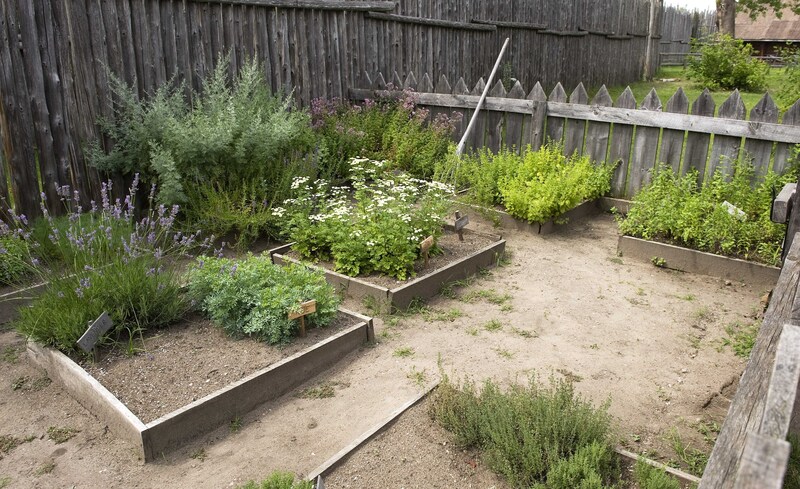Weather-Proofing Your Garden to Prevent Damage
Posted on 25/09/2025
Weather-Proofing Your Garden to Prevent Damage
Unpredictable weather can wreak havoc on even the most beautiful gardens. From intense storms to sudden frosts, your garden faces constant threats. This comprehensive guide offers expert tips on weather-proofing your garden to prevent damage, ensuring your plants and landscape thrive year-round.
Why Weather-Proofing Your Garden Matters
Weather extremes such as heavy rain, scorching sun, freezing temperatures, and gale-force winds pose significant risks to your garden's health and productivity. Effective weatherproofing strategies for gardens can help you:
- Reduce plant loss and improve survival rates during adverse weather events
- Minimize soil erosion and nutrient runoff
- Protect hardscaping and garden structures from damage
- Save time, effort, and money by preventing costly repairs and replacements
Main Weather Threats to Gardens
- Heavy rainfall and flooding
- Drought and heatwaves
- Strong winds and storms
- Frost and unexpected freezes
- Hail and snow accumulation
Understanding these threats is the first step to effective garden weatherproofing.

Assessing Your Garden's Vulnerabilities
Before implementing protective measures, evaluate your garden's existing vulnerabilities. A thorough assessment enables you to prioritize the areas that need the most attention. To do this:
- Analyze drainage patterns after heavy rains. Look for spots where water pools or flows rapidly.
- Identify wind corridors or areas exposed to high winds.
- Monitor low-lying zones that may be prone to frost pockets.
- Take stock of plant varieties and their tolerance to various weather conditions.
- Check the stability and conditions of garden structures, fences, and sheds.
How to Weatherproof Your Garden for Rain and Flooding
Improve Drainage
Excess water is a leading cause of root rot, soil erosion, and plant loss. Enhance water control in your garden by:
- Building raised beds to keep roots above saturated earth.
- Amending soil with organic matter like compost to improve water infiltration and retention balance.
- Installing French drains or gravel trenches to redirect water away from problem areas.
- Mulching heavily around plant bases to slow runoff and stabilize soil.
Plant Selection for Wet Conditions
Choose plants with a high tolerance to wet soil in flood-prone zones of your garden. Some excellent choices include:
- Iris
- Astilbe
- Lobelia
- Cyperus (umbrella grass)
Protecting Your Garden from Wind and Storm Damage
Windbreaks and Barriers
Wind can snap stems, desiccate foliage, and knock over delicate structures. To weatherproof your garden against strong winds:
- Plant hedges or dense shrubs as living windbreaks.
- Install fencing, trellises, or lattice screens to block prevailing winds.
- Secure greenhouses, sheds, and other garden structures with stakes or anchors.
- Use guy wires and support stakes for tall or top-heavy plants like sunflowers and tomatoes.
Stormproofing Techniques
To help your garden resist storm damage:
- Clear broken limbs and dead wood from trees to reduce falling hazards.
- Prune shrubs and trees to maintain a strong, balanced structure.
- Harvest produce or tie back tall crops ahead of forecasted storms.
- Install storm covers or protective netting to shield vulnerable plants from hail and heavy rain.
Guarding Against Frost and Cold Weather
Mulching: Your First Line of Defense
Mulch acts as an insulating blanket for both roots and soil, helping to weather-proof your garden beds.
- Apply a thick layer (2-4 inches) around perennials, vegetables, and young shrubs in late autumn.
- Use organic mulches such as straw, bark, or shredded leaves for natural protection.
- Avoid piling mulch directly against trunks or stems to prevent rot.
Cover Up Tender Plants
Sudden frosts can devastate exposed plants. To protect your garden from cold damage:
- Drape frost cloths, old sheets, or horticultural fleece over vulnerable plants during cold snaps.
- Use row covers, cloches, or cold frames for seasonal crops and seedlings.
- Bring potted plants indoors or group them in sheltered spots.
Smart Planting Choices
- Choose cold-hardy plant varieties for long-term garden resilience.
- Site tender species on the warmer, south-facing side of your home or garden structures.
- Frost-tender perennials can be grown in containers for easy relocation.
Drought-Proofing Your Garden
Water-Wise Planting Techniques
Periods of drought and extreme heat can destroy unprepared gardens. Effective drought-proofing involves:
- Selecting drought-tolerant plants like lavender, rosemary, yucca, and ornamental grasses.
- Grouping plants with similar water requirements to simplify irrigation.
- Planting in mulched beds to reduce evaporation.
- Using drip irrigation systems or soaker hoses for targeted, efficient watering.
Soil Improvement and Water Retention
- Work in generous amounts of compost to increase water-holding capacity.
- Add water-retentive granules to container garden soil mixes.
- Consider installing a rainwater harvesting barrel to capture and store water for dry spells.
Weatherproofing Garden Structures
Reinforce Sheds, Greenhouses, and Fences
Structural weather-proofing is essential for long-lasting garden features.
- Regularly inspect for loose shingles, panels, or broken fence posts.
- Apply waterproof sealant to wood and paint or treat metal to resist rust and rot.
- Anchor lightweight greenhouses or tool sheds to slabs or with ground stakes.
Protect Your Hardscape
- Clean and repair cracks in patios and walkways--water infiltration can lead to freeze-thaw damage.
- Seal stone or concrete pavers for extra weather resistance.
- Store garden furniture under cover or use weatherproof covers during winter and storms.
Monitoring and Maintenance: The Ongoing Process
Weatherproofing your garden is not a one-time effort but a continuous process. Maintenance routines and ongoing improvements will help you stay ahead of the weather:
- Check supports, barriers, and netting after major weather events.
- Replace or repair broken structures as soon as possible.
- Observe plant growth and move specimens as needed for optimal protection.
- Keep gutters, French drains, and downspouts clear to prevent overflow and erosion.
- Regularly replenish mulch and organic soil amendments.
Embracing Smart Technology for Garden Weatherproofing
Automated Weather Sensors
Smart weather systems can alert you to rapid changes and threats:
- Install soil moisture sensors in key locations.
- Link weather apps or personal weather stations to your phone for real-time warnings.
- Automate irrigation according to forecasts with smart controllers.
Choosing the Right Materials and Tools
Invest in high-quality materials that withstand the tests of weather:
- UV-resistant netting and covers for sun protection.
- Heavy-duty plant stakes and corrosion-resistant hardware.
- Weatherproof storage for tools and supplies.

Frequently Asked Questions
1. What's the easiest way to weather-proof a small garden?
- Focus on mulching, installing windbreaks, and using portable covers for frosty nights.
- Choose compact, hardy plant varieties suited for your region.
2. Will weather-proofing affect my garden's biodiversity?
- Proper weather-proofing can increase biodiversity by creating microclimates and protective habitats for beneficial insects and birds.
- Avoid overuse of plastics--opt for natural or recycled materials when possible.
3. How can I prepare for extreme, unexpected weather events?
- Keep emergency covers and supports readily available.
- Grow some plants in containers for quick relocation.
- Stay updated with local weather alerts, so you can act swiftly.
Conclusion: Future-Proof Your Landscape with Thoughtful Weatherproofing
Protecting your garden from weather extremes is an investment in its future beauty, productivity, and your peace of mind. By taking a comprehensive approach to weatherproofing gardens--including soil management, plant selection, structural reinforcement, and ongoing monitoring--you can dramatically reduce the risk of damage from storms, droughts, and frosts.
Start with the most vulnerable areas of your landscape, and gradually build up your defenses. With careful planning, diligence, and the right materials, you'll enjoy a resilient and thriving garden that weathers any storm. For more expert gardening tips and updates on the latest in garden weatherproofing technology, bookmark this guide and revisit often.
Take the First Step Today...
- Assess your garden's risks
- Implement smart weather-proofing solutions for every season
- Maintain regularly and embrace new technologies
Your garden deserves lasting protection--start weather-proofing now to prevent future damage and enjoy flourishing results for years to come!

